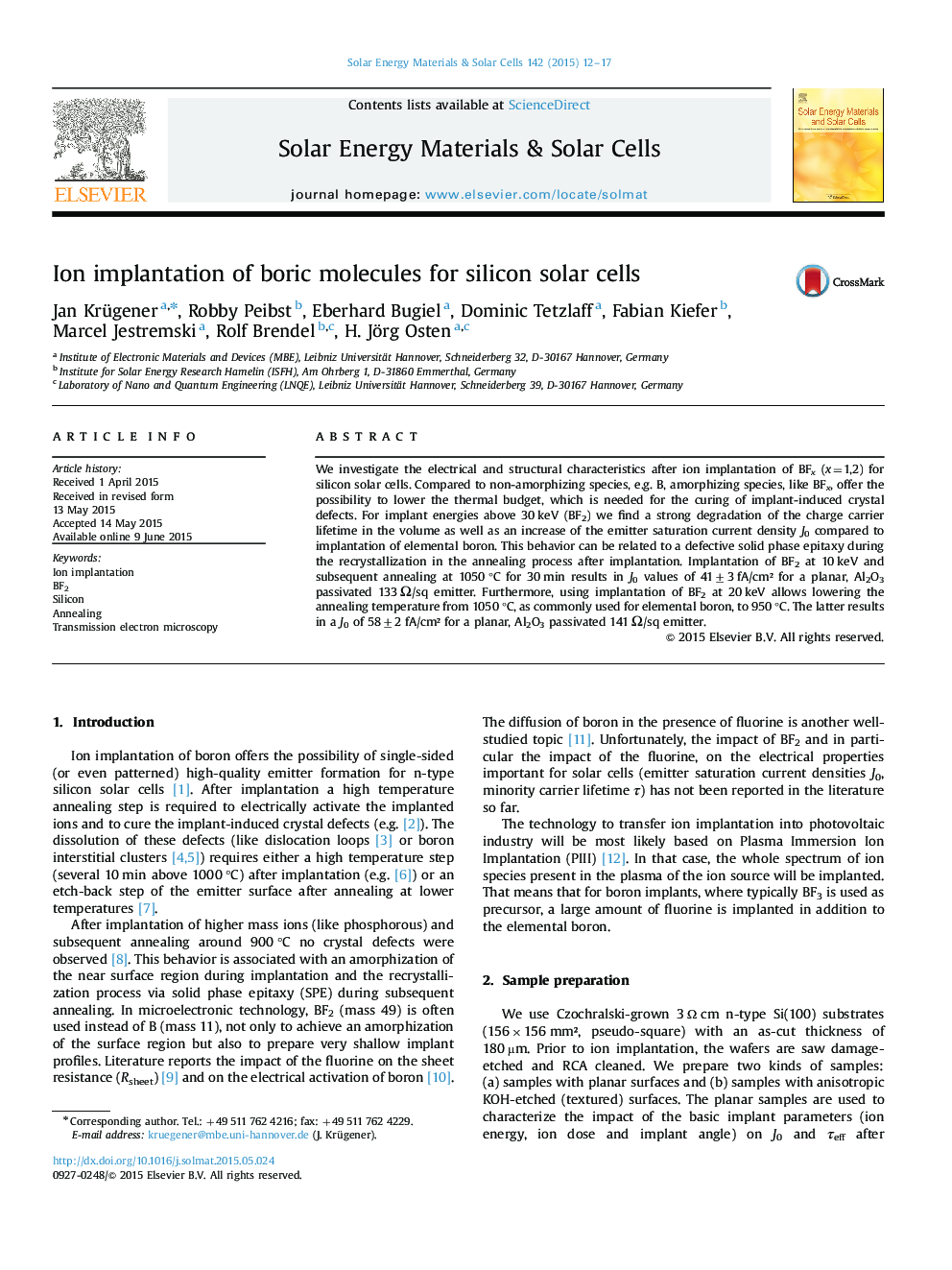| Article ID | Journal | Published Year | Pages | File Type |
|---|---|---|---|---|
| 77791 | Solar Energy Materials and Solar Cells | 2015 | 6 Pages |
•Implantation of BFx allows lowering the thermal budget needed for defect curing.•Electrical properties after annealing are highly sensitive on the implant energy.•BF2 allows lowering the annealing temperature from 1050 °C (elemental boron) to 950 °C.
We investigate the electrical and structural characteristics after ion implantation of BFx (x=1,2) for silicon solar cells. Compared to non-amorphizing species, e.g. B, amorphizing species, like BFx, offer the possibility to lower the thermal budget, which is needed for the curing of implant-induced crystal defects. For implant energies above 30 keV (BF2) we find a strong degradation of the charge carrier lifetime in the volume as well as an increase of the emitter saturation current density J0 compared to implantation of elemental boron. This behavior can be related to a defective solid phase epitaxy during the recrystallization in the annealing process after implantation. Implantation of BF2 at 10 keV and subsequent annealing at 1050 °C for 30 min results in J0 values of 41±3 fA/cm² for a planar, Al2O3 passivated 133 Ω/sq emitter. Furthermore, using implantation of BF2 at 20 keV allows lowering the annealing temperature from 1050 °C, as commonly used for elemental boron, to 950 °C. The latter results in a J0 of 58±2 fA/cm² for a planar, Al2O3 passivated 141 Ω/sq emitter.
